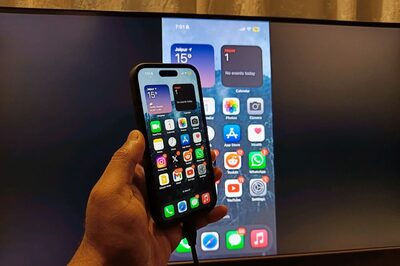
views
Technology company Intel, best known for the processors and graphics that power millions of computing devices globally, doesn’t only do computers. At the London Tech Week in the United Kingdom, the tech company showed off its artificial intelligence (AI) capabilities that help in detecting, identifying and tracking poachers in forests. This is based on the Intel Movidius Myraid 2 vision processing unit (VPU) and powers the TrailGuard AI vision processing and on-camera interference—for cameras used by non-government organisation RESOLVE, in the African forests.
RESOLVE has statistics to show that elephants, rhinos, gorillas, tigers, giraffes, antelopes, and wildbeasts are just some of the animals who are targeted by poachers, and as an example, the NGO says at least one elephant is killed by poachers every 15 minutes, in African forests. The TrailGuard cameras that RESOLVE uses use an on-device artificial intelligence algorithm, to analyse the movements around and in the frame. The cameras are linked to the control rooms, with alerts sent every time the cameras detect a human or vehicle movement. Since poachers generally tend to move at a very slow pace to as to not alert their inevitable prey, these cameras can capture faces as well. This gives the time for authorities to mount a response.
”By pairing AI technology with human decision-makers, we can solve some of our greatest challenges, including illegal poaching of endangered animals. With TrailGuard AI, Intel’s Movidius technology enables the camera to capture suspected poacher images and alerts park rangers, who will ultimately decide the most appropriate response,” said Anna Bethke, leader of AI for Social Good at Intel Corporation, at the time of the launch.
These convolutional neural networks are trained on hundreds of thousands of images, which enables the artificial intelligence to detect any humans from a variety of angles. There is also a much greater chance that the authorities may be able to detect the poachers.
There are always the challenges of storage and battery. Intel says that each TrailGuard AI camera saves images as small as 20 KB each in size, and have a battery life of one year for round the clock operation.
The tech showcase at the London Tech Week 2019, the largest ever LTW event in the United Kingdom thus far, has focused extensively on the AI domain, with companies showcasing their AI and machine learning prowess, all with global applications. “Realising the potential of world-leading digital hubs like the UK and India, we can together create a culture of innovation, pave the way for the next generation of technological advancement and solve global challenges together,” says Amo Kalar, Deputy Director, Trade and Innovation, British High Commission.
This Intel example is just one that can be used in pretty much any national park anywhere in the world, since animal poaching is a global menace. The TrailGuard AI cameras, in partnership with the National Geographic Society, Leonardo DiCaprio Foundation and others, will be deployed in 100 reserves in Africa throughout 2019, with plans to expand to Southeast Asia and South America.
















Comments
0 comment